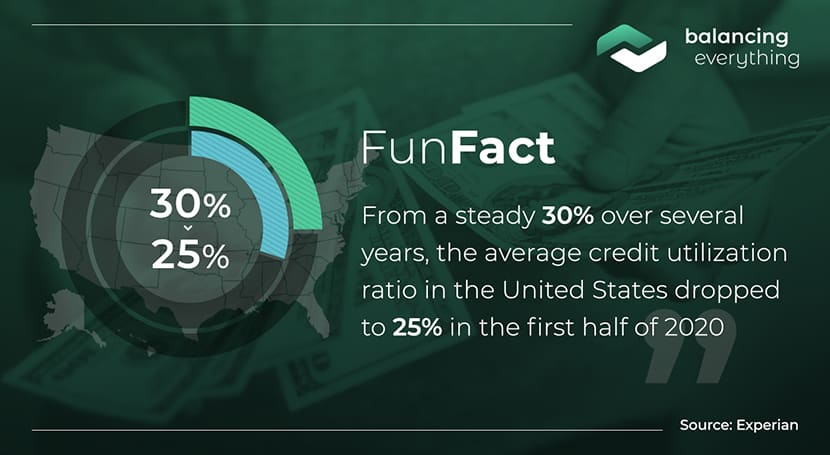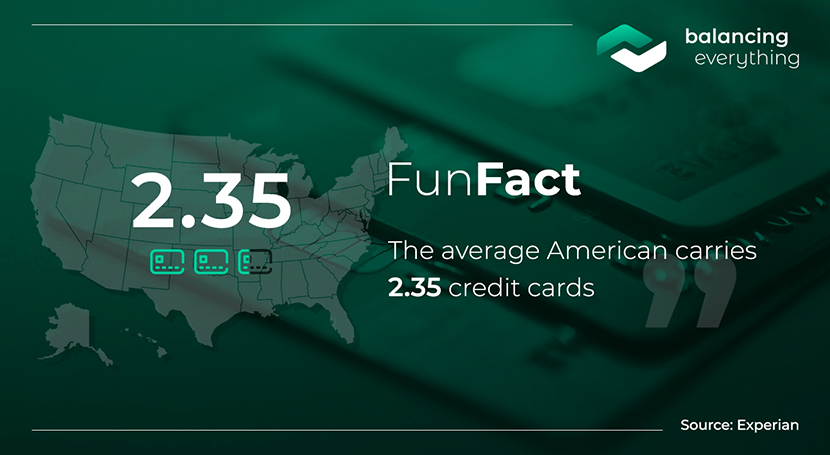What is Credit Utilization Ratio and Why is It Important?
When talking about credit score and financial health, one of the most important factors is the credit utilization ratio. In short, this number represents the used percentage of your credit. Depending on how you handle it, you can ultimately build your financial health.
If this is the first time you encounter the concept of credit usage, don’t worry — the BalancingEverything team is here to explain everything about credit usage ratio and how it affects your FICO grade.

What is Credit Utilization?
This is the percentage of balance used from your credit. If your total card limit is $1,000 and your balance is $200, you have utilization of 20%. The concept is also explained as the ratio representing your outstanding card balances against your total credit card limits.
Utilization is, basically, your credit card balance compared against your approved spending limit. The stats on credit card debt show that Americans owe $807 billion across almost 506 million card accounts. Hence, achieving the perfect utilization ratio is a true struggle for millions of US adults.
How is Credit Utilization Calculated?
The simplest way is to divide your credit card balance by your limit. Multiply the result by 100, and you have your utilization rate. For example, divide your balance of $300 by a limit of $1,000. Multiply the result 0.3 by 100 to get 30%.
The credit utilization calculation is quite simple. Everyone can keep track of their rate at home and ensure they’re on the right path.
When is Credit Utilization Reported?
There isn’t a rule on when credit card companies need to report utilization ratios to credit bureaus. Typically, they send such reports on the closing date of a statement. Please note that credit bureaus often take a few days or even weeks to update your credit card utilization rate.
The most important thing here is that there are no rules in place. You can expect to see the updated score after the end of a billing cycle. If this doesn’t happen within a day or two, there’s no need to worry. Everything depends on how fast your card provider sends the reports and how fast the rating bureaus update their databases.
Is Credit Utilization Calculated per Card?
Credit bureaus analyze your ratio per card alongside your overall revolving utilization. This means that even if you have a perfect score on one card, it won’t make up for the fact that you maxed out another card.

What is a Good Credit Card Utilization Ratio?
Both FICO and VantageScore rating charts recommend utilization ratio of about 30%. Anything over this percentage is a signal to creditors and lenders that you have trouble with your finances.
That said, having no activity isn’t smart either. To put this in numbers, the ideal credit utilization ratio stands somewhere between 10% and 30%.
People without any utilization fail to show that they have regular expenses they can cover. Without any credit payments, you’re not building your FICO score either. It doesn’t matter if you hold one or more cards. The only crucial thing is to use your credit moderately and show that you are a financially responsible person.
Per-Card vs. Overall Credit Card Utilization Ratio
When credit bureaus calculate credit utilization, they focus on your total usage. This calculation compares the total balance versus the entire line of all your credit cards. Still, Americans mustn’t overlook per-card utilization either. This calculation focuses on the use of a specific card.
Let’s dive deeper into this concept with an example. You have three credit cards whose combined limit is $10,000, and their combined used balance stands at $3,000. In this case, your overall credit card utilization score would be 30% (3,000/10,000, then multiplied by 100).
Let’s say the individual card limits are $3,000, $3,000 and $4,000. Their respective used balances are $0, $1,000 and $2,000. Doing the credit utilization calculation for each of these card limits will get you ratios of 0%, 33.33%, and 50%, respectively.
Why Does Credit Card Utilization Affect FICO Scores?
Maxing out your credit card is a signal to bureaus and financial institutions that you have trouble managing your finances. It shows that you are overspending instead of carefully planning your purchases. Since your FICO establishes your creditworthiness, it won’t give you a good rating if you can’t handle your money.
How Much Does Credit Utilization Affect Credit Score?
With a 30% impact on your FICO score, it’s the second most important factor, right after payment history. While hard credit inquiries and your credit age moderately affect your FICO rating, credit utilization can drastically lower or increase it.
How Balance Reporting Affects My Credit Utilization Percentage?
Before your credit score utilization affects your FICO grade, it needs to reach the major credit bureaus. This, however, sometimes takes several business days or even a week. This means you shouldn’t expect any utilization-related changes to boost your score right away.
Let’s say you need a payment of $500 to achieve the optimal credit utilization of under 30%. Regardless of when you make this payment, the changes appear after your credit card company updates your information. Such updates of consumers’ credit score utilization ratio usually happen once a month, around the end of the billing cycle.
Credit bureaus take additional time to update your score. So, if you need a quick fix, keep in mind that there is no such thing. Still, that doesn’t mean that you should ignore your credit card usage when you’re nothing looking for loans.

How to Lower Credit Card Utilization?
This takes planning and responsibility. To bring your ratio within the accepted range, you should make regular credit card payments and increase your available credit. Also, consider spreading your charges across different cards every month. Other options are to decrease your spending altogether.
Closing unused credit cards is not recommended if you want to maintain a good credit utilization ratio. Use these when another card utilization gets near the 30% limit. Also, you want to pay off any balance as early as possible. This way, you make sure that the card issuer sends the updated version to the credit bureaus. Balance transfer from one card to another is also an option.
With the credit utilization ratio accounting for about 30% of your credit score, you want it to exist. You should therefore avoid situations of your credit utilization being too low, too. Make frequent purchases and make due payments in time. That way, you’ll have nothing to worry about. Remember, late payments hurt both your utilization ratio and your FICO grade.
Another way in which you could potentially improve your credit utilization rate is to pay off balances with a personal loan. Just keep in mind that loans often come with high interest rates. So while they help you improve your credit card usage, they can increase your monthly expenses. Plus, personal debt negatively affects your FICO grade. So, it’s not guaranteed that you will achieve a good credit score with this step.
Final Thoughts on Credit Utilization Ratio
Americans shouldn’t ignore any of the factors that can hurt or boost their creditworthiness. Since the utilization rating contributes to about 30% of your FICO score, you must handle it properly.Make sure never to utilize over 30% of your credit balance. If you’re already above this threshold, use our tips to lower it as soon as possible. Remember, a healthy credit utilization ratio is one of the steps towards building a good FICO rating.




Leave a Reply